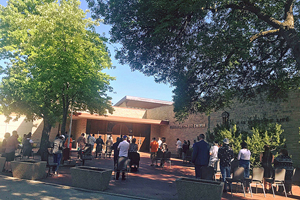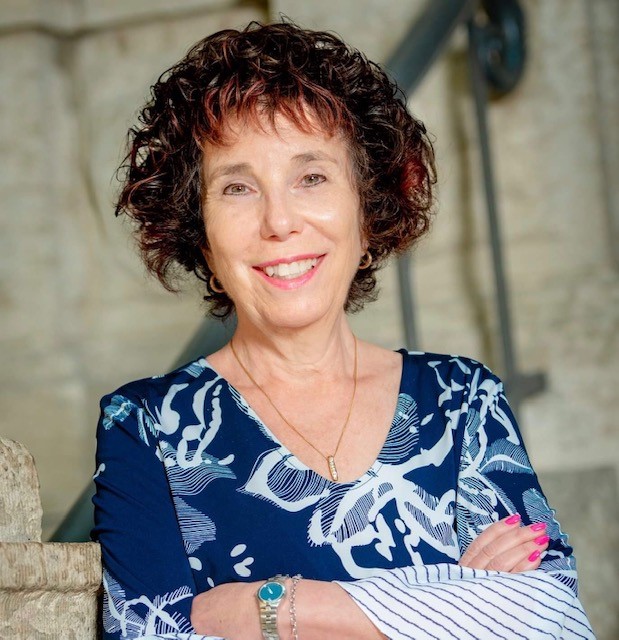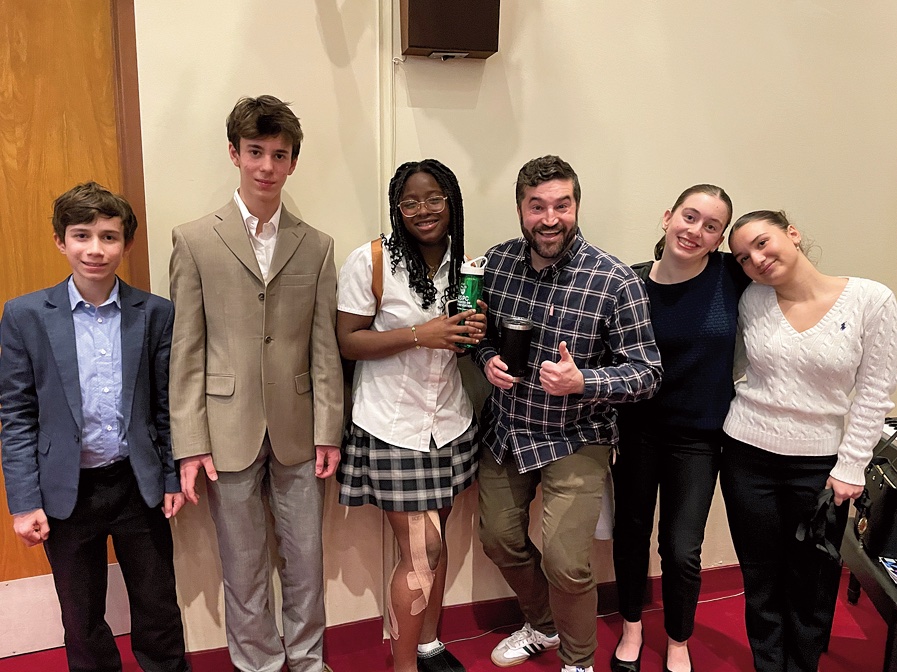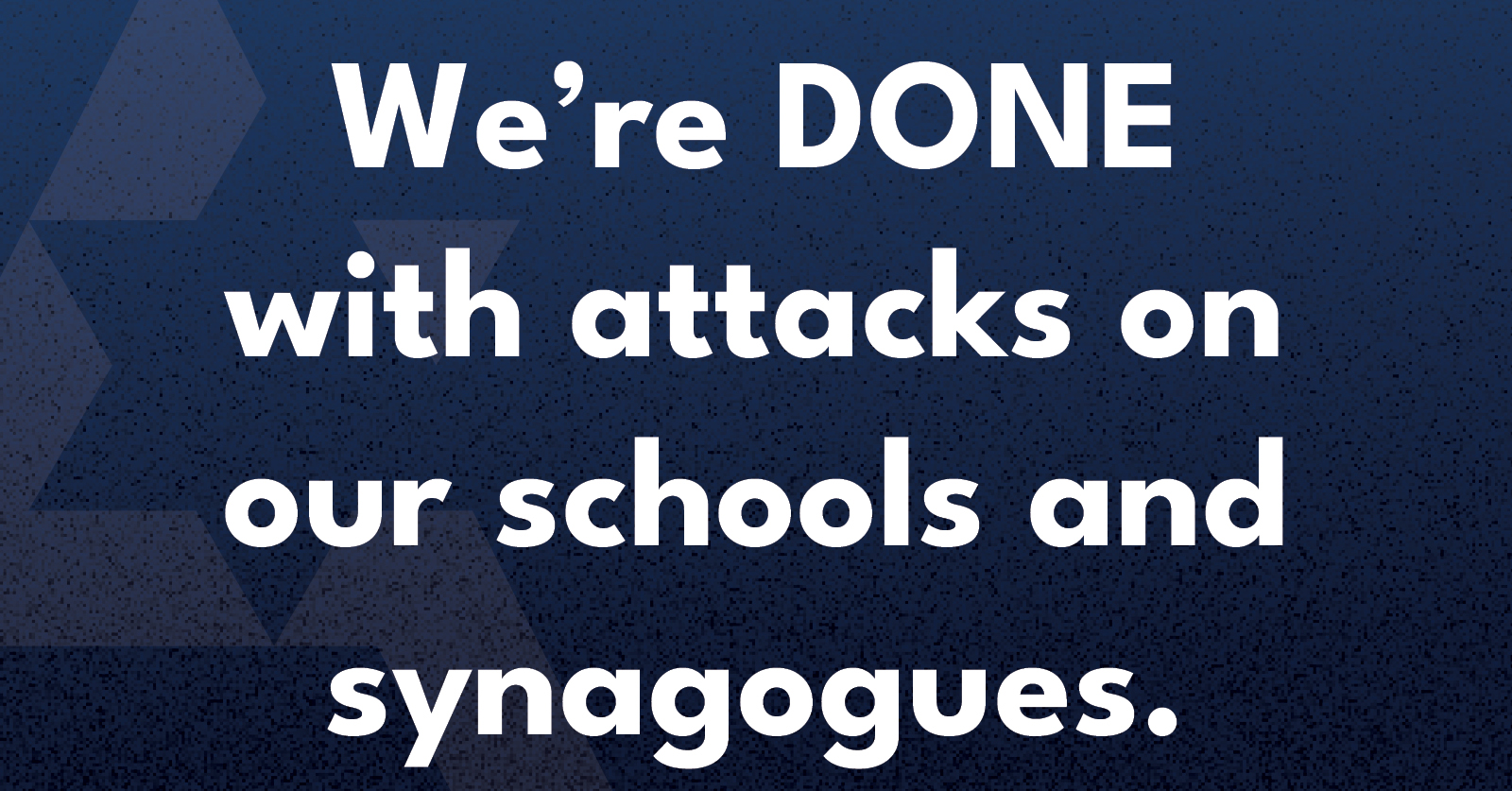Local News
Synagogues working on Yom Tov plans with minimal in person attendance

By MYRON LOVE
It is most definitely an understatement to say that this will be a yom tov like no other. In my last year’s reporting about high holiday attendance at Winnipeg synagogues (including services held at Camp Massad) in The Jewish Post & News yearly survey of high holiday synagogue attendance I noted that about 4,500 Jewish Winnipeggers at least could be found in shul – at least at peak times – for shofar-blowing, Kol Nidre and yizkor.
This year, however, – due to COVID-19 – in-person attendance will likely be no more than 500.
To begin with, there will be two fewer options: Camp Massad, which usually hosts services for one day of Rosh Hashonah, will not be having any services – and the Saul and Clarabelle Simkin Centre, which has made a practice of including family members of residents in the synagogue services, this year – due to government pandemic regulations – will be restricting services to residents in their units.
“As we did for Pesach and Shavuos, we will be videotaping parts of the Yom Tov services with our chazan, Stephen Hyman, and we will be broadcasting them in each of our five units,” says Marilyn Regiec, one of the spiritual health support staff at Simkin. “We will be doing the same thing for Sukkot.”
Regiec will be leading the services – with assistance from Aviva Tabac. Regiec also would like to extend a grateful thank you to Barry Kay and his Cherry Tree Productions for doing the video-taping.
As for our community’s largest congregations, both Congregation Etz Chayim and the Shaarey Zedek will be offering virtual Yom Tov services – just as they have since the province went into lockdown in late March.
“We still have to be cautious,” says Ian Staniloff, Congregation Shaarey Zedek’s Executive Director. “Although the government has raised the maximum number of people who can gather indoors to 30% of capacity or 500 (whichever is less) and we may allow some in-person attendance, all of our High Holiday services will be live-streamed.”
(Last year, the Shaarey Zedek reported an attendance of more than 1,700 for the High Holidays.)
“We have begun asking the members of our congregation if they would be interested in attending in person, but there has not been much response yet. If we do have some people who would want to come, we would limit the numbers, have people at the door to take their temperatures, maintaining social distancing and sanitizing the seats.”
Staniloff adds that the synagogue has a new set of mahzorim that would be distributed to people who are following online so that they could better follow the service.
He points out that Shaarey Zedek has been livestreaming services for several years now.
He further adds that, although the synagogue has been closed to the public since the lockdown began, Shaarey Zedek will soon begin to host B’nai Mitzvahs again – including some that were scheduled for the spring and had been postponed.
“We will be limiting the number of people in attendance to 50 and requiring everyone to wear masks except when called to the Torah,” he notes. “We will be maintaining social distancing.
“And, rather than buffet kiddushes, we will have servers behind plexiglass partitions.
“We will be trying to phase our services back in on a smaller scale at first and see what shortcomings we may have to address.”
Congregation Etz Chayim (where High Holiday attendance last year was about 850) will be offering only a virtual service this year – with the exception of ten people to form an in-person minyan.
“After careful consideration, for the safety of our members and Clergy, and given the uncertainty of distancing requirements, Congregation Etz Chayim concluded that we must offer our High Holiday Services online this year,” writes executive director Jonathan Buchwald in a letter to congregation members.
“While services are going to look, sound and feel very different than what we are used to, Rabbi Kliel, Cantor Tracy and our entire Ritual team will offer a most meaningful and memorable “Virtual Sanctuary” for Rosh Hashanah and Yom Kippur”. Our own Virtual Voices choral ensemble under the direction of Sarah Sommer will bring a special depth and beauty to our services. We are also excited to announce that we will be using a new Mahzor this year, made possible by the very generous gift of a member family.
Also in Etz Chayim’s planning is an outdoor patio Selichot service (Saturday, September 12); Erev Rosh Hashanah Mincha and Ma’ariv services (Friday, September 18); and Tashlich the 2nd day of Rosh Hashanah (Sunday September 19) – weather permitting.
Rounding out our community’s Conservative congregations is the Chevra Mishanyes congregation in Garden City. The Chevra Mishnayes Synagogue is planning on having in-person services for the High Holidays but, congregation President Marshall Kneller reports, “we are not sure what it will look like yet. We are still working on the details in consultation with our members.”
Temple Shalom, our community’s only Reform Congregation, will hold high holiday services entirely online – accessible either via a Zoom link or streamed live on the congregation’s website: , or on Facebook Live at -– as has been the practice for Shabbat services for the past several months. Ruth Livingston, the congregation’s co-President, reports that certain parts of the High Holiday service will only be available online for Temple Shalom members.
For Orthodox congregations in the city, virtual services are not possible. The board of Adas Yeshurun Herzlia congregation – our communty’s largest Orthodox shul – is still working out the details for Yom Tov. “We plan to be open and have services indoors,” says President Jack Craven. “We are considering shorter services for Rosh Hashonah and may have two same day services if time permits.”
He notes that attendance will be restricted to 50 or, possibly 75 people (now that the province has raised the maximum number of people allowed in an indoor venue) and masks will be mandatory. (The sanctuary under normal circumstances can accommodate up to 300.)
The Lubavitch Centre resumed twice-daily minyanim several weeks ago. “We have even hosted three bar mitzvahs over the past few weeks,” reports Rabbi Avrahom Altein, Chabad’s long time spiritual leader in Winnipeg. “We have moved the women’s section out of our big shul, are only allowing family members to sit together and, for kiddushes, all of the food is prepared and packaged ahead of time with people eating at their tables.”
What will make preparing for Yom Tov a little more difficult, he notes, is that the Lubavitch Centre traditionally doesn’t sell seats. “We are going to have to try to get people to register this year,” he says. “We could take out the tables to create more room – but we have to be careful about numbers. We will have lesser numbers though.”
And, whereas the tradition is that men being honoured with aliyahs come up to the bimah, recite the brachas while standing beside the Torah reader, and then follow along as the Torah reader reads, now those receiving aliyahs will say the bracha, then sit down again.
In north Winnipeg, the three Orthodox shuls are the Chavurat Tefila Congregation in West Kildonan, the Talmud Torah Beth Jacob Synagogue on Main Street and the House of Ashkenazi on Burrows Avenue.
The House of Ashkenazi has, over the past few years, been open only for morning minyanim during the week (and Sunday) and for Yom Tov. President Gary Minuk reports that the congregation is planning to restart morning services in mid-August and is planning on High Holiday services. Masks will be compulsory.
The Chavurat Tefila Congregation began having Shabbat morning services and yahrzeit minyanim again in late May. Masks will be on hand at Yom Tov for those who require them and hand sanitizer is also by the entrance.
The Talmud Torah Beth Jacob’s plans are still uncertain.
Local News
Cheryl Hirsch Katz, Jewish Child and Family Service’s longest serving staffer, set to retire at end of the month

By MYRON LOVE “I loved working at Jewish Child and Family Service,” says Cheryl Hirsh Katz, who is due to retire at the end of June. “I have always appreciated the warm and welcoming atmosphere here. I feel that the people working here are my extended family. I am going to miss my colleagues”.
“I have derived great satisfaction over the years to have been able to help many people in our community of all ages through my work at JCFS,” she continues.
After 44 years at the agency, Katz, the longest-serving member of the staff, was given an appreciative send-off at the JCFS’s recent (June 23) Annual General Meeting at the Shaarey Zedek Synagogue.
The daughter of Art and Bess Hirsh, Cheryl grew up in Garden City. She attended Peretz School, then Jefferson Junior High and Garden City Collegiate. She joined the staff of JCFS in 1981, shortly after receiving her Bachelor of Social Work degree.
She earned an MSW in 1990.
“I chose to become a social worker,” she recalls, “because I always wanted to be able to help people.”
Katz was originally hired by JCFS to work with newcomers. After a couple of years, she was given responsibility for looking after the needs of older adults.
“I really enjoyed working in older adult services,” she says. “That is where I spent the bulk of my time at JCFS.”
After ten years as a case worker, she was promoted to a supervisory role. Later, she was also given responsibility for mental health and addictions programming and settlement services, while keeping the older adult files under her purview.
“As a supervisor, I wasn’t directly involved with individual clients,” she points out. “I was more involved with programming. Among the programs for seniors we organized were – for example – sessions on elder abuse, digital storytelling and memory loss.”
She notes that one of the trends she has seen over the last 44 years is that people are living longer and living in their homes longer. A lot more of our clients are living well into their 90s,” she observes. “We have had to continually expand our staff and the services we provide in order to accommodate the growing demands of an aging population.”
She also spoke of the mental health needs of seniors and aging Holocaust survivors.
She says that she has mixed feelings about leaving JCFS. “After so many years working full time, I am going to have to create a new routine,” she comments.
She notes that, now that she is retired, she will have more time to spend with her parents – who are in their 90s.
And then, there are the two dogs to look after. “I will have time now to try new activities,” she says. “ I might learn to play mah-jong.”
She speaks about maybe doing some traveling – although her husband, Murray, is still working full time.
(She and Murray have one daughter, Farah.)
“Retirement may also include some volunteering,” she adds.
It is quite likely, she will be continuing her association with JCFS but in a volunteer capacity.
Local News
Gray Academy students shine in provincial, national debating competitions

By MYRON LOVE It has been another good year for Gray Academy’s high school students who participated in provincial and national debating competitions. The best results were recorded by Grade 9 student Noa Mednikov, who finished fourth overall nationally, fourth in interpretive reading, and fifth in persuasive speaking at the junior National Public Speaking Championship in early May in Vancouver.
Last October, in the Junior Provincial British Parliamentary Championship – which was held at St. John’s-Ravenscourt – Noa and her partner, Raya Braunstein, finished third as a team while Raya placed third in individual debating.
Their fellow Grade 9 student Maxim Moscalenkov tied for first in persuasive speaking in Vancouver, while the Gray Academy team of Gabe Tapper and Aaron Koplovich finished fifth. Aaron also finished fifth in his individual debate.
Earlier, in March, Maxim finished fifth in the Provincial Juniors debating competition, which was held at Balmoral Hall He and his debate partner, Nate Shenkarow, finished seventh among the teams entered. Last November, he and partner, Ethan Tenenbein, finished seventh in the Junior Prepared Tournament – just behind the Gray Academy team of Nate Shenkarow and Jack Kay.
At the senior high level in that competition, the team of Jacob Tenenbein and Jonah Novoseller finished fourth and Jacob was recognized as fifth best in an individual capacity. Jonah and Jacob also paired up to win the Asper Cup, which was held at their home school.
Jacob represented Manitoba at the Junior National Speech Championship in Vancouver in May and, last October, he and Grade 12 Gray Academy students Julie Krozkin and Daniel Bokser represented Canada at an international debating tournament in Bermuda.
Gray Academy’s debating program was introduced by Linda Martin in 2003. She also led the debating teams at Balmoral Hall. In 2011, Martin was succeeded by Gray Academy high school English teacher Andrew Kaplan.
“Andrew has done a wonderful job with the debating program” says Martin, who has a debating trophy at Gray Academy named in her honour, as well as a provincial trophy for best individual junior debater. “Over the years, Gray Academy students have done very well in many local, national and international competitions,” she adds.
About three weeks ago, this writer had the opportunity to sit down with Andrew Kaplan and six of the school’s top debaters while they discussed the benefits of learning how to debate. According to Noah Strauss – who competed in the Junior Provincials at Balmoral Hall in March, public speaking leaves him with a feeling of accomplishment.
“It’s a good skill set to have,” he observes. “It builds confidence.”
“A benefit of being able to debate is that you learn how to convince people that you know what you are talking about,” adds Maxim Moscolenkov.
Raya Braunstein notes that being able to debate is a skill that she expects to be helpful in many university courses which she may choose to take.
As Andrew Kaplan notes, the ability to express yourself has a great impact in whatever career you choose to pursue.
He points out that debating is compulsory at Gray Academy for all Grade 7 and 8 students – and students can continue debating as an option in the higher grades
Of course, competitive debating is not for everyone. For those students who opt to take that path, the journey begins with internal school debate competition – with the top debating teams and individuals qualifying for local tournaments and – potentially – beyond.
Andrew Kaplan reports that a small number of high schools in Winnipeg and southern Manitoba have active debating programs – including St. Johns Ravenscourt, St. Paul’s High School, St. Mary’s Academy, Garden City and Maples Collegiates in the Seven Oaks School Division, St. Maurice (a Catholic School), as well as Morden Collegiate and Dasmesh, a Sikh private school.
Kaplan expresses his appreciation to the Asper Foundation and an endowment spearheaded by the Kives Family for providing funding for the Gray Academy debating program – as well as the Andrew Slough Foundation – which was established by his friends in memory of the outstanding former Ravenscourt student debater and lawyer who passed away suddenly two years ago at the still young age of 38.
I am confident that our Jewish community can look forward to the continued success of Gray Academy’s star debaters and to the continual emergence of future stars as the times goes by.
Local News
Antisemitism has crept into grade school in Canada

Antisemitism in Canada has moved beyond protests and politics; it is now entering classrooms and altering how Jewish children see themselves functioning within them.
A a university student I have observed the experience of my younger brother in grade eight as a Jewish student. Over the past few months, his school has been at the center of several deeply troubling incidents that have made him feel unsafe in our parks, community, and even his school. Swastikas were drawn around the community, in parks and ponds. Additionally, an older man, who claims to be a pro-Palestinian influencer, stood outside his predominantly Jewish school wearing a keffiyeh, filming a video which then circulated between students on TikTok.
This same man later showed up to our local Jewish community center in keffiyeh to allegedly watch his son play basketball where my brother and many of his classmates go for their lessons, basketball games, and Jewish events. These moments made him and his peers feel watched and targeted just for being Jewish. Local political representatives condemned the incidents and raised awareness about antisemitism, but the fear among students didn’t go away. The feeling of being targeted for simply existing has been taught to my brother, something my parents had tried their hardest to escape from.
Most recently, my brother was chosen to represent his school at a regional science fair. When one of the judges arrived wearing a keffiyeh, he froze. For many, including my brother after the incidents he has faced, the keffiyeh represents a political message. But even more so for my younger brother, it is tied to the fear and intimidation he had already experienced. He felt nervous, distracted, and unsure of how to act.
This is not about silencing political expression. It is about a child who came to share his ideas and left feeling uncertain and afraid. It is about the atmosphere forming in Canadian schools, where Jewish students are being made to feel targeted and unwelcome.
His school made an effort to address the incidents, but the impact is lasting. Posts on social media, much can be very vague at times about inclusion cannot fully undo the feeling of being singled out. A kind word from a teacher does not erase the fear that builds when threats are left unspoken but deeply felt.
I am writing this as a sister who watched her younger brother lose a moment that should have been filled with confidence and pride. He deserved to feel safe. So do all Jewish students in this country.
Moving forward, schools must take concrete steps to protect all students. Antisemitism cannot only be addressed when it becomes violent or overt. It must also be recognized when it appears as intimidation, symbolic targeting, or political messaging that creates fear among students. Children should never have to question whether they are safe in their own classrooms or community spaces.
Events that are meant to support and celebrate students must remain focused on them. Individuals who feel the need to bring political symbols or messages into school grounds or children’s events should not be welcomed in those spaces. Schools must make it clear that their environments exist to support learning, safety, and inclusion, not to host agendas that can intimidate or isolate students.
Administrators and educators must develop clear guidelines for identifying and responding to antisemitic behavior in all its forms. This includes strengthening security measures, offering ongoing staff training, and engaging directly with Jewish families to understand their concerns. Inclusion is not a one-time statement. It is a responsibility that must be reflected in everyday decisions and actions. No child should ever feel unsafe or unwelcome because of their identity.
The author is a Campus Media Fellow with HonestReporting Canada and Allied Voices for Israel who lives in Toronto.
